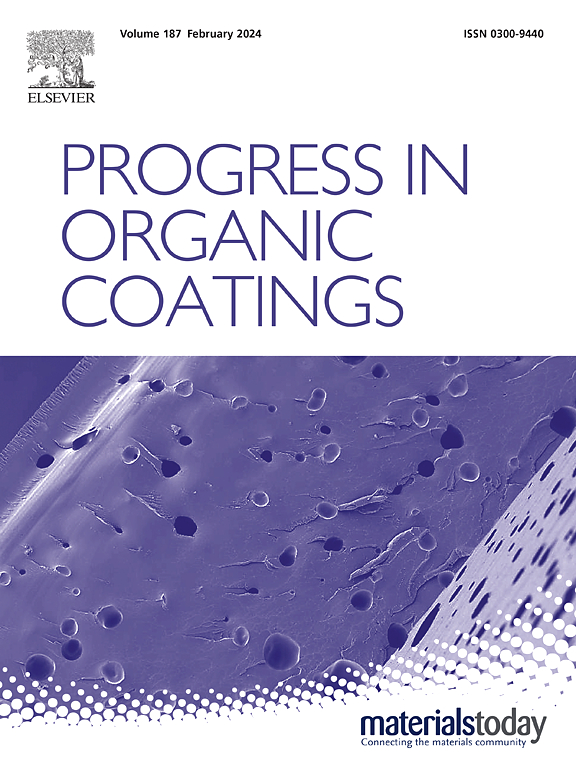Boosting anti-corrosion and anti-fouling properties of photocured epoxy films with multi-epoxy siloxane monomer
IF 6.5
2区 材料科学
Q1 CHEMISTRY, APPLIED
引用次数: 0
Abstract
In this study, we used a low-surface-energy multifunctional cyclic siloxane monomer (TOCS) and commercial bisphenol-A epoxy resin (BE-188) to prepare highly efficient anti-corrosion and anti-fouling coatings (SAT) through cationic photopolymerization. The effects of the TOCS monomer on the coating, including photoreactivity, mechanical properties, transparency, and hydrophobicity, were investigated. The introduction of cyclic siloxane into the formulation not only contributed to hydrophobicity and adhesion properties, but also enhanced its mechanical, thermal, and chemical properties. Electrochemical analyses for anti-corrosion performance were conducted and found that the SAT-10 coating exhibited the best anti-corrosion performance with corrosion protection value up to 99.8 %. Additionally, the coated films were tested to evaluate their chemical resistance and anti-fouling properties under acid, alkali solutions and drinks (such as cola, coffee, juice), respectively. Furthermore, the removal ability of activated carbon solids by water was also conducted. The network crosslinking density, hydrophobic and adhesion properties are beneficial for the contact between the coating and dirt or corrosive mediums (Cl-, H2O, O2). Therefore, we are confident that the environmentally friendly anti-corrosion and anti-fouling coating prepared by this research has great potential for widespread application.
求助全文
约1分钟内获得全文
求助全文
来源期刊

Progress in Organic Coatings
工程技术-材料科学:膜
CiteScore
11.40
自引率
15.20%
发文量
577
审稿时长
48 days
期刊介绍:
The aim of this international journal is to analyse and publicise the progress and current state of knowledge in the field of organic coatings and related materials. The Editors and the Editorial Board members will solicit both review and research papers from academic and industrial scientists who are actively engaged in research and development or, in the case of review papers, have extensive experience in the subject to be reviewed. Unsolicited manuscripts will be accepted if they meet the journal''s requirements. The journal publishes papers dealing with such subjects as:
• Chemical, physical and technological properties of organic coatings and related materials
• Problems and methods of preparation, manufacture and application of these materials
• Performance, testing and analysis.
 求助内容:
求助内容: 应助结果提醒方式:
应助结果提醒方式:


